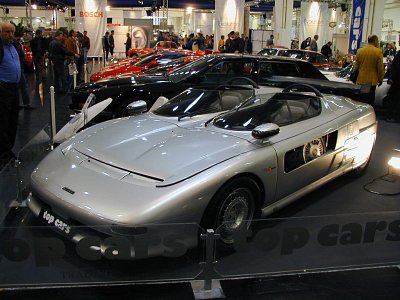 (1) |
Italdesign, the company of Giugiaro, is known since the 70s for excellent concept and production cars. The most famous car is probably the Volkswagen Golf (Rabbit), but the '78 Audi 80 (4000) is also from Giugiaro. Giugiaro designs vehicles for all manufacturers and the concept cars are also not limited to one company. Some of his concept cars use production cars, others their components. |
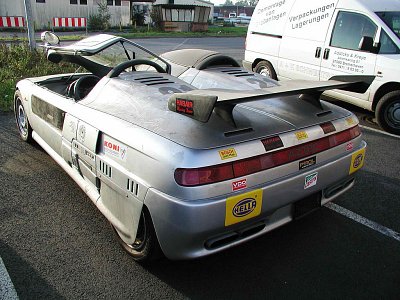 (2) |
Many concept cars look strange after a few years. With Italdesign this is -I think- not the case. Who does not believe it, should visit the nice site of Italdesign! 1988 Italdesign presented the Aztec, a sportscar concept. The special thing about it was, that driver and co-driver were seated separately. Because of that, there was an electr(on)ic communication link between them! |
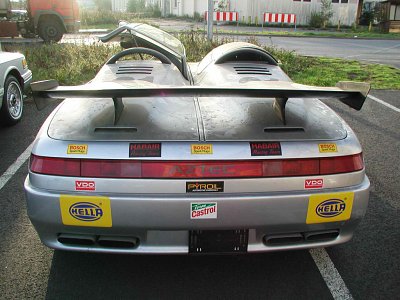 (2) |
The engine normally was a 200PS Audi Turbo. The fivecylinder is mounted transversely as mid engine in front of the rear axle. The Aztec has permanent all-wheel-drive. I cannot say more to this, eventhough things like differentials and their locks would probably be interesting. Some Aztec have a stronger engine. Not a big surprise, considering how easy to tune the fivecylinder turbos are. |
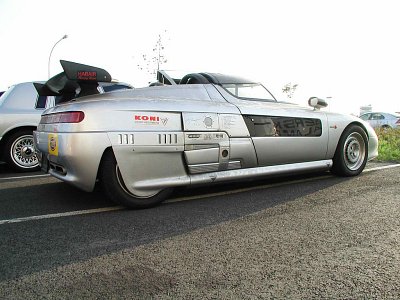 (2) |
All in all, probably 50 Aztec were built. Two of them became famous as other concept cars. One was the Aspid, a Coupé with rigid roof and the Asgard, a van with eight seats. All with Audi engine and AWD. According to Italdesign, these vehicles were also presented in 1988. |
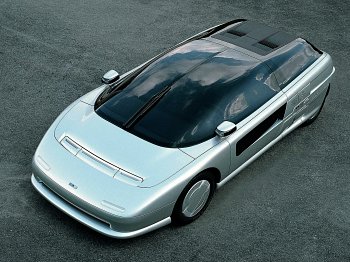 Aspid (3) |
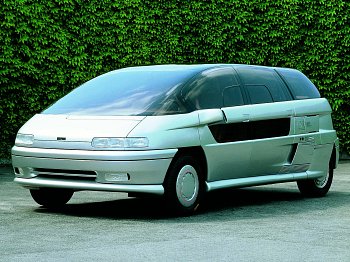 (3) Asgard |
| You can get the pictures in large from Italdesign. | |
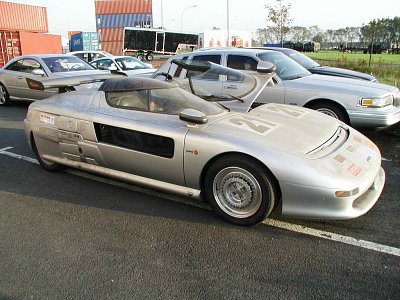 (2) |
To enter the car, you first have to tilt the canopy upwards and then open the door. The "black" area in the doors is transparent. You can also see some styling characteristics that show that the Aztec is an "old" concept car. The playful side panels and the 16" rims with 225/55 all around are not contemporary today. |
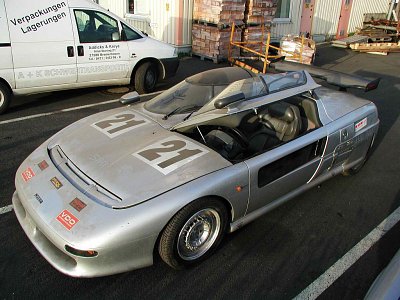 (2) |
|
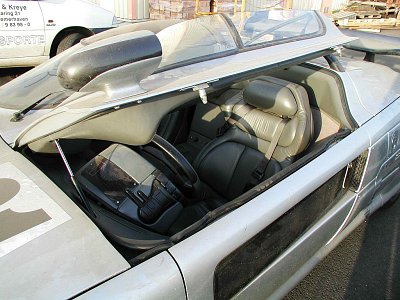 (2) |
One look into the interior. Far more luxurious than I had expected! Normally, cars with separate cabines are Spartan, trying to blend motorcycle feeling with cars. Between the seats you can see the dials of the intercommunication system. The seat belts are sport units, keeping you firmly in the sport seats. |
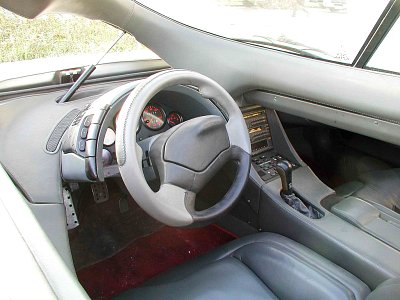 (2) |
The not exactly flimsy steering wheel has roughly the same diameter as the part of the dashboard holding the intruments. I was told that there were a few cars with two (working) steering wheels which were used as driving school vehicles! The knobs and dials in front of the shifter are for the seat adjustment. The car radio system even has CD. |
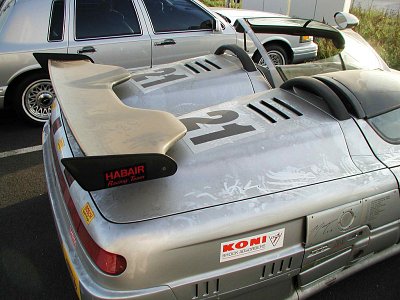 (2) |
Here you can see the air vents and the protruding parts of the roll bars. Even the rear wing is special, as its front edge is not straight, but mimics the curve of the canopies. I have also seen a picture of an Aztec without the wing. Also visible (or rather not) is the removed "roof" on the driver's side canopy. The 200PS engine accelerated the Aztec to about 240km/h (150mph). |
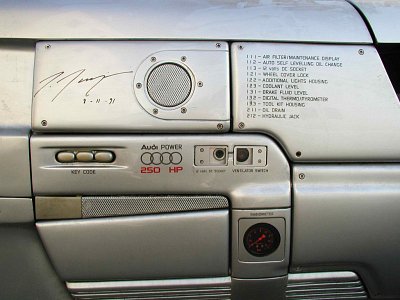 (2) |
Again, much to see here. The car is not simply unlocked with a key, but by entering a key-code. I suppose that the round area is the fuel tank cap. Apart from the 12V socket there is a switch for a ventilator. To cool the engine -which here has 250PS- after a run? The manometer reaches till 4bar (58psi), but for what? Tire pressure? Oil pressure? Also, the meanings of three-figured numbers are unclear for me: Error codes? Additional equipment? Activation codes? |
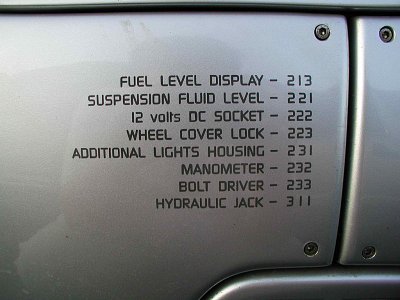 (2) |
And more numbers on the other side... |
Everyone who can send in additional info, would make me very happy :) |
|
| Data from italdesign.com | [metric] | [imperial] |
|---|---|---|
| length | 4270mm | 168" |
| width | 1970mm | 76" |
| height | 1175mm | 46" |
| wheelbase | 2600mm | 102" |
| track f/r | 1670/1660mm | 65.7/65.4" |
| overhang f/r | 1010/660mm | 40/26" |
| displacement | 2226cm^3 | 136cui |
| power | 200PS@6200 rpm | |